Knapweeds (Spotted, Diffuse, and Meadow)
Centaurea spp. (stoebe, diffusa, and x moncktonii)

Spotted Knapweed Rosette
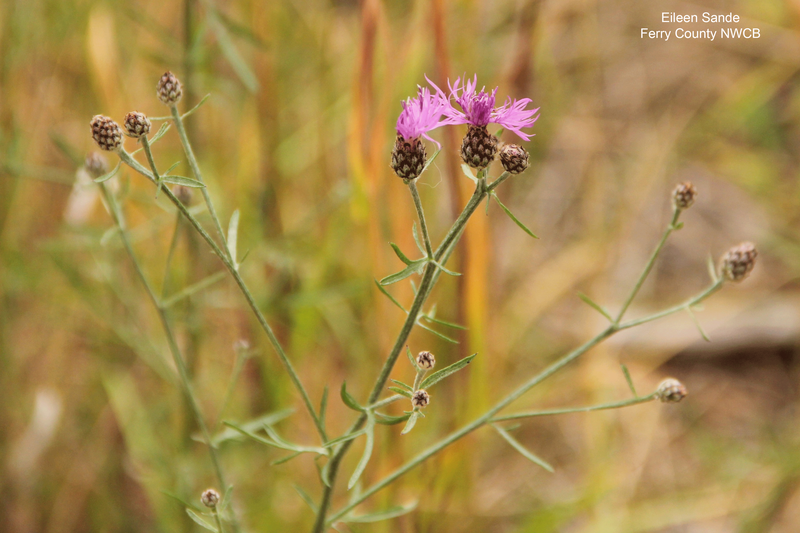
Spotted Knapweed
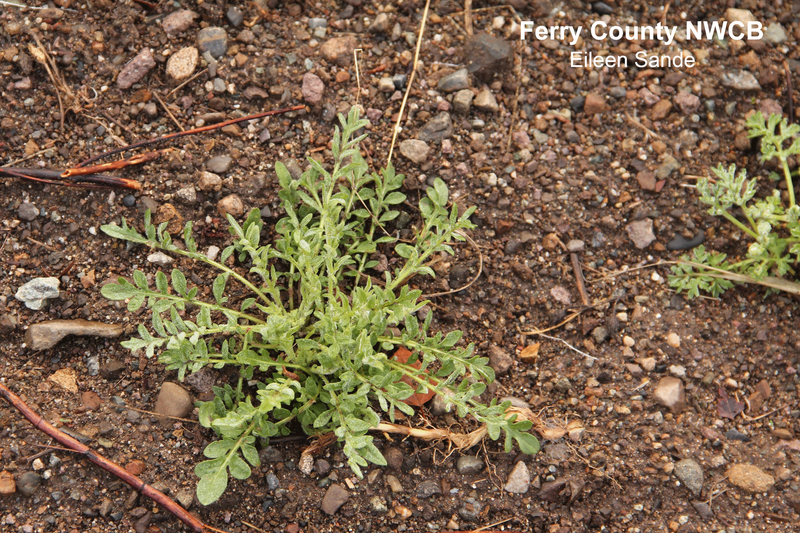
Diffuse Knapweed Rosette
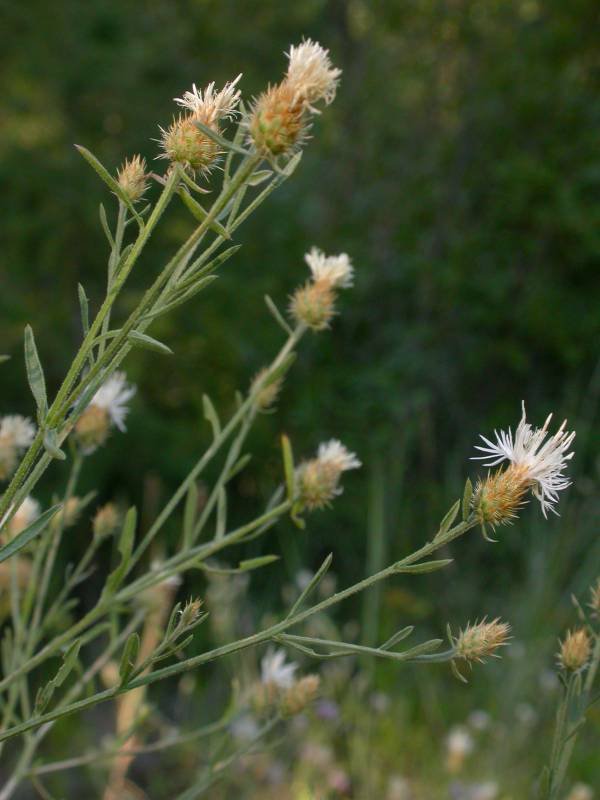
Diffuse Knapweed
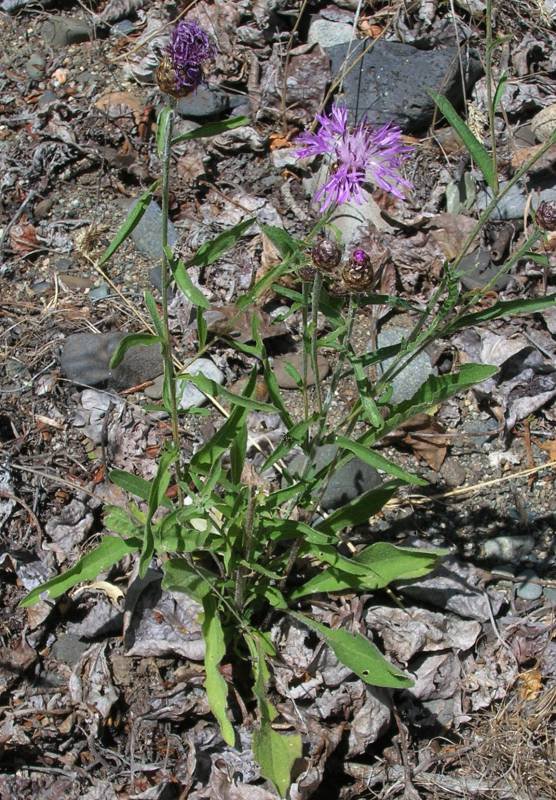
Meadow Knapweed
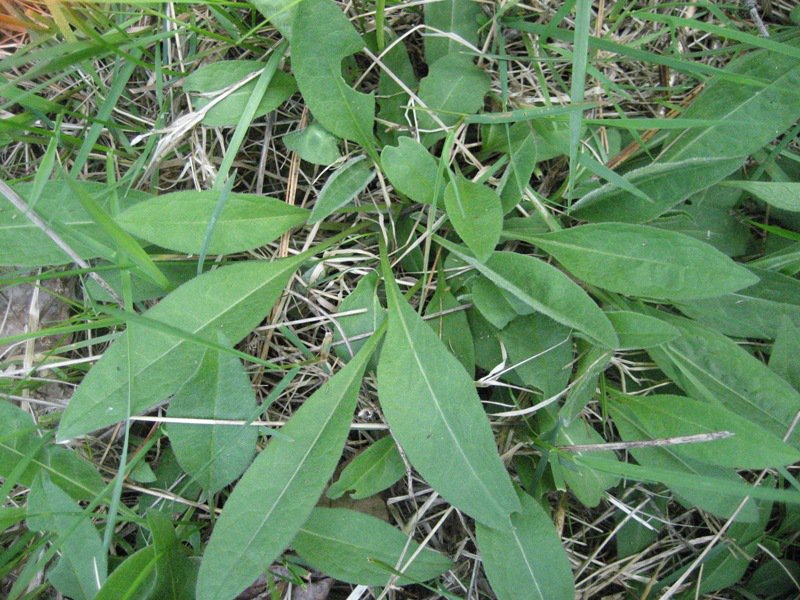
Meadow Knapweed rosette
Spotted Knapweed - A biennial or perennial that typically grows about 5 feet tall and has a stout taproot. Is hairy with a rough and woolly appearance. First year rosettes and second year flowering stems.
Leaves: Rosette leaves deeply lobed, upper leaves are generally un-lobed.
Flowers: Flowers bloom from June-October. Solitary flowerheads. Egg-shaped plant scales (bracts) with a black/brown triangular tip that make the plant look spotted.
Diffuse Knapweed - An annual, biennial, or perennial plant growing up to around 3 feet. Long taproot and generally one main stem that branches freely. Plant covered with hairs on all parts.
Leaves: Basal leaves are generally short stalked and twice divided into narrow lobes. Basal leaves grow up to about 7.8 in. Leaves decrease in size moving up the plant and are stalkless.
Flowers: Flowers bloom from July-September. Generally narrow flowerheads. Flowers are usually white, but can be a pinkish purple as well. The spine at the top of the bract protrudes more.
Meadow Knapweed - Hybrid of Brown and Black Knapweeds. Characteristics can vary between parent plants. Perennial that grows between 1-5 ft tall.
Leaves: Leaves are not divided and are about 6 inches long and 1.25 inches wide. They can be smooth, slightly lobed, or have toothed margins. Leaves also decrease in size moving up the stem.
Flowers: Flowers bloom from June-September. Solitary, terminal flowerheads. Bracts are smaller and more rounded in shape giving off a metallic sheen when flowering. Flowers generally are rose/purple, but can lighten in color and almost be white as well in some soils.
Knapweed Habitat: Typically grow in dry meadows, pastures, rocky areas, gravel mines, roadsides, airports, vacant lots, hayfields, forest clearings, and on sandy or gravelly floodplains.
Weed Classification: B Designate
Why is it a Noxious Weed?
Very aggressive species that can quickly infest large areas. They decrease plant diversity, increase soil erosion, and are a wildfire hazard.
There are many species of Knapweed with similar characteristics. If you are having trouble with identification of your problem weed please let us know and we can help!
Control Recommendations:
